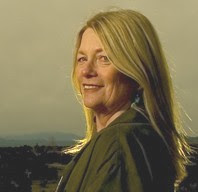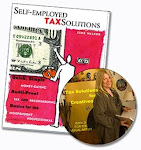June --
I am from Long Island City (Queens), NY I am an Information Architect/Interaction Designer (web development) I have been independent (1099 sole proprietor) less than one year.
I am wondering if you could advise me on issues surrounding a retirement fund. I am interested in the Freelancers Insurance 401k plan. The limit for contribution is $16,500 but there is a profit sharing option which allows you to contribute as much as $49,000. How do I determine if I am eligible for profit sharing?
Daniel
Dear Daniel.
Here's a simple view of how pensions work for self-employeds:
You have a net income. Depending on your income and how much of that income you don't need for immediate living expenses [sometimes called discretionary income] you contribute money to your pension.
You can choose a pension that allows the contribution to be deducted from your income thereby reducing your current income tax. Years from now, when you withdraw the money from your pension you will pay tax on the amount withdrawn.
Or you can choose a pension that does not allow a deduction from income now. So there is no immediate tax deferral. And that means you will not have to pay tax on the money when you withdraw it years from now. These are ROTH versions of a pension account. For instance, you've probably heard of an IRA. This would be a ROTH IRA.
When you are 59 1/2 years old you may start withdrawing from your pension with no penalty. If you withdraw before age 59 1/2 you will have to pay a 10% penalty. There are some exceptions.
There are many different types of pension plans that a self-employed may have. The most flexible and the one that allows the largest contribution is a UNI-K, also know as a SOLO-K or one-person 401-k.
In 2009, if your income is high enough, you may contribute $16,500 plus 20% of your net income. This is not a requirement, this is a maximum. As long as you have a net income you may set up a UNI-K. There are additional contributions allowed if you are 50 years old or older.
To qualify for 2009, the plan must be set up before December 31, 2009. However, you have until you file your 2009 tax return to make the contribution. That could be as late as October 15, 2010.
You set up the plan at a brokerage house, for instance Raymond James or Schwab. Should cost about $ 75 or $100 per year. Be sure to use a brokerage house that allows complete flexibility in investment products. Some houses limit the investments for UNI-Ks.
There are other plans that allow for much greater contribution amounts and cost much more to set up and maintain. They are called Defined Benefit plans. I suggest them to clients who are at least 45 years old and who make a lot of money.
Here are a few other posts I've done on pensions.
Best,
June
Subscribe to:
Post Comments (Atom)





2 comments:
Hi June - I have been working for the last several years as a chess instructor in afterschool enrichment programs. I work as an independent contractor and receive a 1099 each year. Recently I have been thinking about setting up a solo 401(k). In your book, you indicate that one should have an EIN when setting up a self-employed retirement plan. I've always used my social security number as my sole proprietorship's identifying number, and the financial institution I've contacted said they can set up the account with just a social security number. Could you comment on why you suggest having the EIN for this purpose? I'm afraid that if I set up the account without it, I might find out later that I've unecessarily complicated things. Thanks. - Gavin
P.S. Love your book!
Dear Gavin,
Currently, according to the IRS, if you are self-employed and opening a "Keogh plan" you must get an EIN. If you search a little further you find that a 401-k is a Keogh. So yes, you must have an EIN for your new pension.
Check out Do you need an EIN? for an easy chart.
Glad you love my book Self-employed Tax Solutions! Thanks for letting me know. Please tell your indie colleagues. They all need tax help.
June
Post a Comment